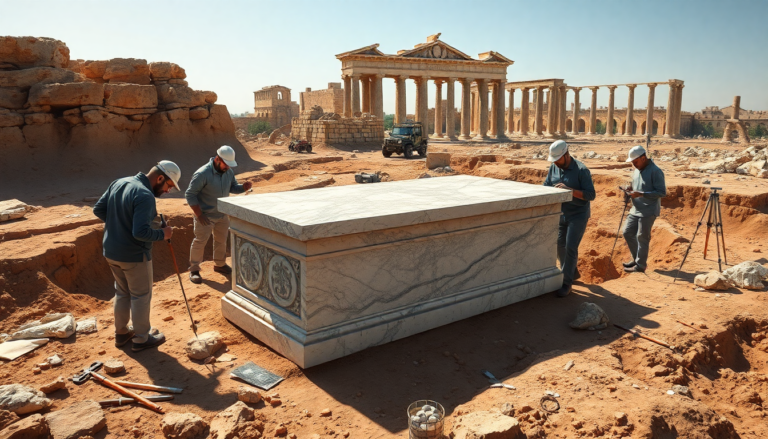Argomenti trattati
In the coastal city of Caesarea, Israel, a team of archaeologists has made a significant discovery that sheds light on Roman history. During an excavation directed by the Israel Antiquities Authority, researchers uncovered a rare marble sarcophagus dating back 1,700 years. This find is extraordinary not only for its age but also for the intricate details it reveals about the beliefs and customs of the time.
The excavation process
In April, as archaeologists Nohar Shahar and Shani Amit began their work, they anticipated uncovering important artifacts, but the revelation of this particular sarcophagus took them by surprise. As they carefully removed layers of soft sand, the first glimpse of a marble object emerged. The excitement among the team was palpable as they unearthed more of the sarcophagus, revealing carvings of mythological figures, deities, animals, and trees. Each fragment uncovered added to the mystery and grandeur of the find.
Historical context of Caesarea
Caesarea, located along the Mediterranean coast, was an essential port city established by Herod the Great in the first century BC. Named in honor of the Roman Emperor Augustus, it served as a cultural and economic hub during the Roman and Byzantine periods. The city is renowned for its archaeological treasures, ranging from aqueducts and amphitheaters to stunning mosaics and marble statues. The recent discovery adds yet another layer to the rich history of this ancient locale.
Features of the sarcophagus
The sarcophagus features a dynamic tableau centered around Dionysus, the god of wine, depicted in a vibrant scene that may symbolize celebration and the afterlife. Researchers noted that the imagery includes a drinking contest between Dionysus and Hercules, a rare depiction not often found in sarcophagi from this period. While Dionysian processions are common themes in Roman art, the specific depiction of this drinking contest highlights an aspect of Roman culture that intertwines revelry with death. It invites contemplation regarding the perception of mortality as a transition rather than an end.
Significance of the discovery
This remarkable find offers a unique glimpse into how life and faith were perceived in the Roman world. The sarcophagus, dating to the 2nd or 3rd century AD, is a testament to the artistry and beliefs of the time. The intricate carvings, which feature not only Dionysus but also a procession of mythological figures, present a narrative celebrating the journey of the deceased into the afterlife. Such representations challenge conventional views of death, encouraging a perspective that sees it as the beginning of a new journey rather than a finality.
Future presentations and discussions
The story of this sarcophagus promises to unfold further during an upcoming conference titled “The Feast,” set to take place at the Eretz Israel Museum in Tel Aviv. Here, experts will delve into the significance of the find, examining the artistic and cultural implications it holds for understanding Roman traditions surrounding death and the afterlife.

